
(aka Death Valley Mormon Tea)
Shrubs Around Las Vegas, Vegetation Around Las Vegas
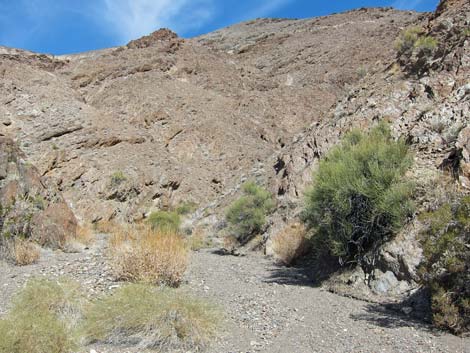 Death Valley Jointfir in Death Valley National Park |
General: Death Valley Jointfir, Death Valley Mormon Tea, (Ephedra funerea) is a mid-sized, sprawling to upright shrub with many dull, gray-green to gray, apparently leafless stems. Individual twigs come off the stems at widely diverging angles (about 60-degree angles) and with numerous fine longitudinal lines. The leaves and cones are in whorls of three. The leaves generally do not become recurved with age, and the leaf base is not swollen. The leaves are reduced to scales, and photosynthesis takes place in the stems. Members of this plant family are cone-bearing plants more closely related to pine trees than to flowering plants. The small cones (about 1/2-inch long) can be seen in the spring when the shrub is "flowering." Cones sessile. Death Valley Jointfir is a fairly common component of vegetation communities in dry, well-drained gravelly areas on bajadas into the lower mountains in the Upper Sonoran (Mojave Desert Scrub and Pinyon-Juniper Woodland) life zones. Around Las Vegas, look for Death Valley Jointfir northwest of town from about the west side of the Spring Mountains westward across Death Valley National Park. |
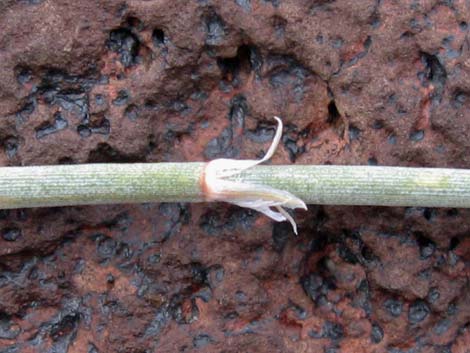 Leaves 3-ranked, shredding with age; note longitudinal stripes |
Family: Jointfir (Ephedraceae) Other Names: mormon tea, death valley ephedra, ephedra, Ephedra californica var. funerea Plant Form: Sprawling to erect shrub, apparently without leaves, stems gray-green to gray. Height: To about 3 ft high and spreading widely. Bark: Gray, cracked, and irregularly fissured. Stems: Stems and twigs jointed, joints 2-3 inches apart. Twigs alternate (3-ranked), rigid, angling away from the stem. Twigs gray-green, aging to gray, with numerous fine longitudinal grooves. Nodes not swollen or enlarged. Leaves: Tiny (2–5 mm) 3-ranked leaves located at the stem joints. Leaf bases fuse around the stem. Shredding with age. Apex acute. The leaves generally do not become recurved with age, and the leaf base is not swollen. |
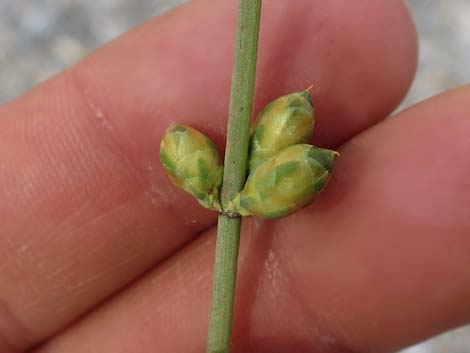 Cones 3-ranked; bracts oval, yellowish with green center |
Flowers: Blooms in the spring. Plants are male or females. Male plants have pollen cones that grow from nodes; pollen cones oval to 8-mm long; sessile. Bracts in whorls of 3, cream to pale yellow, oval. Female plants have seed cones that grow from nodes; seed cones oval to 10-mm diameter; sessile. Bracts papery, translucent with orange-yellow to greenish-yellow center and base. Seeds: Usually 1-2 per cone. 3 by 10 mm, light brown to yellowish green, scabrous. Habitat: Dry, well-drained sandy, gravelly, and rocky soils on upper bajadas and moderate slopes into the mountains; rocky areas. Elevation: 1,500 to 9,000 feet. Distribution: Death Valley region (Nevada and California) Comments: Tea can be made by steeping fresh twigs in boiling water. The stems of most members of this genus contain the alkaloid ephedrine and are valuable in the treatment of asthma and other respiratory diseases. |
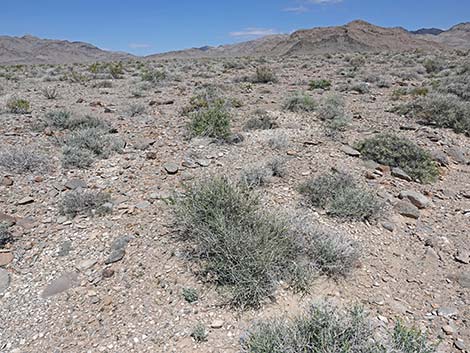 |
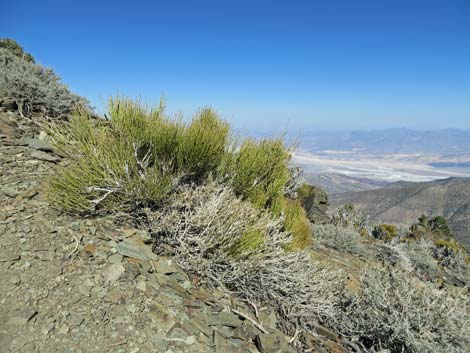 |
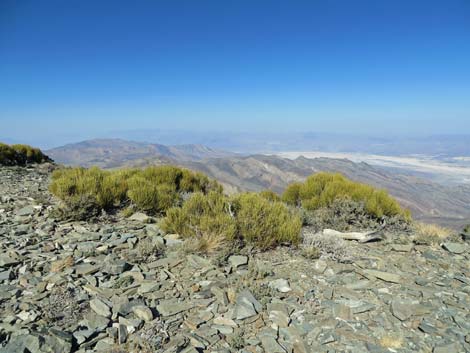 |
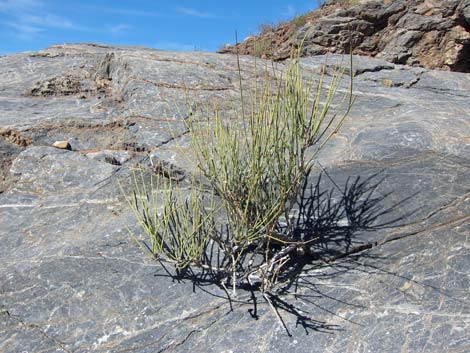 |
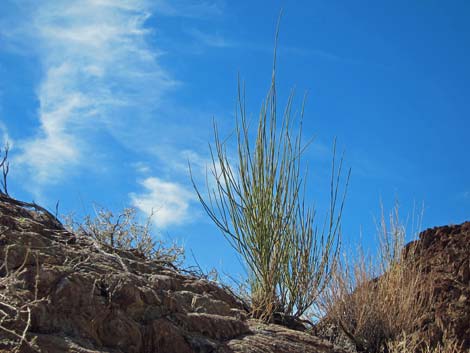 |
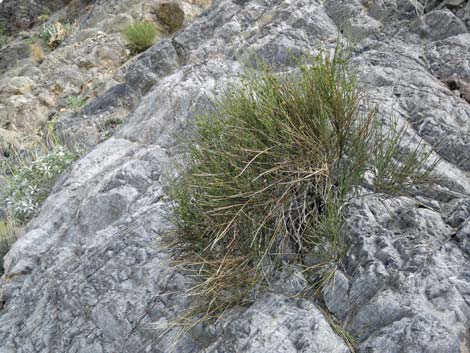 |
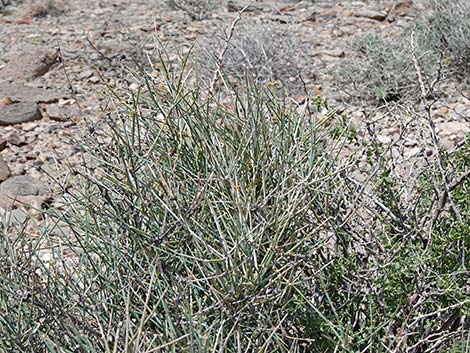 |
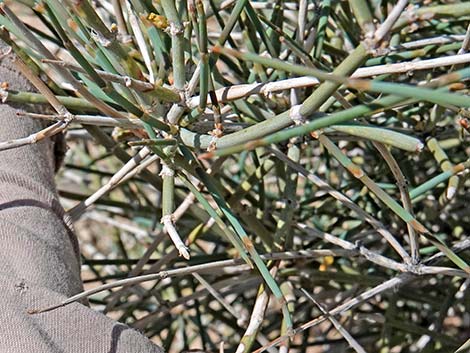 |
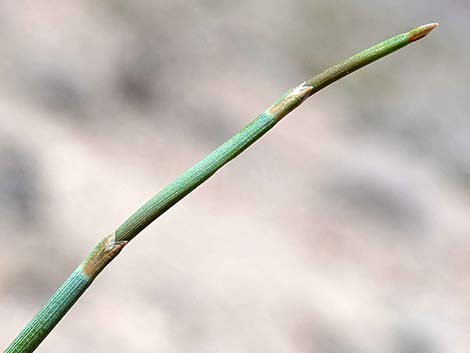 Leaves 3-ranked |
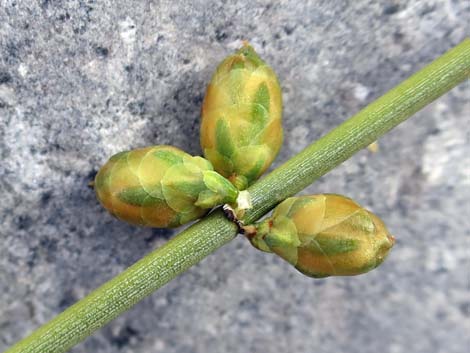 Cones 3-ranked |
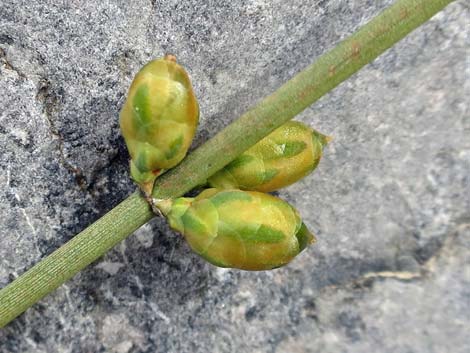 Cones 3-ranked |
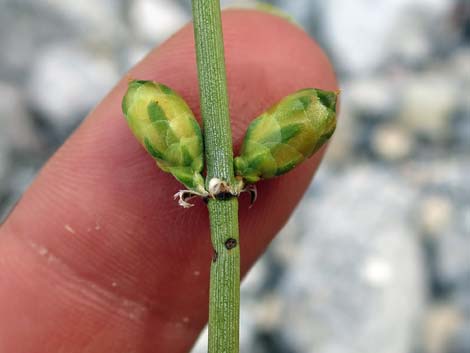 Cones 3-ranked -- don't be fooled by a missing cone |
 Male cone with stamens exerted |
 More to come ... |
Note: All distances, elevations, and other facts are approximate. Names generally follow the USDA database.
![]() ; Last updated 240914
; Last updated 240914
| All Shrubs | Plant Species Index | Glossary | Copyright, Conditions, Disclaimer | Home |